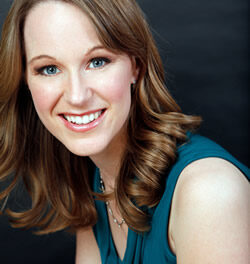Cacophonous cracks of thunder and deluges of rain upon the roof of Robert E. Lee Auditorium conjured visions of Wotan’s storm cloud harrying about, seeking out the disobedient Brünnhilde. This musing is a by-product of the flurry of press about this year’s Ring Cycle in Toronto, Canada. Had the tempest arrived after the intermission of the North Carolina Symphony’s imaginative program it would have been a fit companion to Stravinsky’s Le Sacre du Printemps, THE pivotal musical work of the Twentieth Century. It was a less welcome subtext to Beethoven and an evocative world premiere. The hall’s fine acoustics helped keep the large audience immersed in the music while safe from the drenching rain.
Part of the North Carolina Symphony’s 75th Anniversary Celebration is a series of commissions from leading NC composers, the “Postcards from North Carolina” commissions, coordinated by composer J. Mark Scearce of NCSU. His compilation of all the “postcards” into a single work will be performed in the 2007-2008 season.
Composer Kenneth Frazelle’s roots in NC run deep. Born in the coastal town of Jacksonville, he was accepted at the North Carolina School of the Arts in 1971 as a pianist. After transferring to NCSA’s composition program, he studied under Robert Ward. Frazelle continued advanced study at The Julliard School in New York in 1974 where his principal teacher was Roger Sessions. Graduating with the Gretchaninoff Award for High Achievement in Composition in 1978, Frazelle flirted with his teacher’s complex modern style awhile before finding his voice by embracing the folk musical heritage of our state. Like Bartók and Kodály, folk elements are kernels for sophisticated exploitation.
This concert was the world premiere of Frazelle’s portion of the Postcards commission, The Swans at Pungo Lake, which evokes the massive convergence of tens of thousands of tundra swans and snow geese at sunset in areas surrounding Lake Mattamuskeet. Expansion of a U.S. Navy landing field for fighter jets may jeopardize this part of the Pocosin Lakes Wildlife Refuge.
Frazelle, quoted in Richard Rodda’s fine program notes, says “the piece begins with spacious, undulating music in the marimba, strings and muted brass, suggesting the flat, open landscape. An oboe solo presents a second theme…” Pianissimo strings have a rich sonority which combines with muted horns and trombones. Dominated by the second theme, more and more sections of the orchestra are drawn into “soaring, dance-like shapes.” Two percussionists shook large rectangular sheets to suggest the flapping of myriads of wings. Music Director Grant Llewellyn secured refined playing from every section of the orchestra with close attention to both color and graduated dynamics. Frazelle’s “postcard” was immediately appealing, evocative of nature without being cliché. It ought to make a fine opening work for future programmers.
Canadian virtuoso violinist James Ehnes was simply breath taking in a deeply probing account of Beethoven’s magnificent Violin Concerto in D Major, Op. 61. Playing the fine “Ex Marsick” Stradivarius violin of 1715, Ehnes played with a glorious sweet tone throughout his instrument’s range, including the highest notes which were free of the slightest hint of acidity. His intonation was immaculate and his cultivation of color was most refined. Dynamics were minutely adjusted and Llewellyn’s orchestra followed the soloist closer than a shadow. Time seemed to stand still, almost, during the second movement which had just enough underlying momentum. The ultra-quiet playing of the strings in this movement was astonishing. Ehnes played the Kreisler cadenzas in the first and last movements and a hybrid of the Joachim-Kreisler in the beautifully realized transition into the finale. Outstanding among orchestra soloists were timpanist John Feddersen, oboist Melanie Wilsden, and bassoonist John Pederson. The two horn players were terrific throughout.
What a treat it was to watch from the balcony all the extra and rarely heard instruments demanded by Igor Stravinsky’s Le Sacre du Printemps! There were about 52 strings and lots of extras in the woodwinds, trumpets, and tubas. Nine horns, led by Principal Andrew McAfee, put on quite a floorshow as they raised their bells high from time to time. Associate Principal Kimberly Van Pelt and a stand mate, alternated between their standard horns and a pair of Wagner tubas which looked like horns with smaller bells, looking like a cross between a pigmy tuba and a tenor horn. Sections played in lock-step as they shifted instantly between the complex cross-rhythms. Llewellyn was alert to the juxtaposition of rhythms and was sensitive to Stravinsky’s complex palette of instrumental color. His interpretation was worthy of this defining work of “modern music.” Many Southern Pines and Pinehurst patrons resist music of the Twentieth Century. Instead of the fisticuffs and rioting reminiscent of the Paris premiere of March 29, 1913, this performance received a couple of restrained curtain calls.
The history of Le Sacre du Printemps performances in North Carolina has been slow to build! The state’s professional orchestra premiere took place July 25, 1981 in Dana Auditorium, Guilford College, during the Eastern Music Festival. Robert Dunand, a former timpanist-protégé of Ernest Ansermet, led the Eastern Philharmonic (augmented with advanced students). The North Carolina Symphony under Acting Music Director Patrick Flynn, did Robert Rudolph’s reduction of the score in November 1981. Now Conductor-Laureate Gerhardt Zimmermann led the 1st full score performance by NCS November 22-23, 1996, the orchestra’s 50th anniversary season. Elsewhere the Charlotte Symphony played it in 1987 and 1994. Peter Perret programmed it with the Winston-Salem Symphony in 2001.











